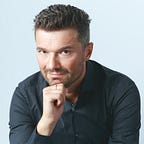We are (NOT) born creative.
For many years now, World Economic Forum reports have presented creativity as one of the top traits that people must possess to meet the challenges of the present and (mostly) the future: “creative jobs would survive automation because creativity is a uniquely human trait that no algorithm can replace. And the pandemic is accelerating the importance of creativity, too. ”
Automation (RPA) and artificial intelligence (AI) endanger most of our jobs and creativity is one of the primary weapons with which we can maintain, for now, the supremacy of the human over the artificial.
Similar to the results of the WEF report, company managers, of any level, want team members to be more creative, to think differently, to find “out of the box” solutions, putting creativity alongside proactivity in thinking and action.
Also, we discuss to hundreds of people in our innovation and/or Design Thinking projects. Many told us that they choose these projects or courses because they want to increase their creative potential and learn new methods and techniques to be more creative.
This universal human desideratum is fascinating: both individually and as leaders and society as a whole — people from all walks of life want more creativity and, instinctively or consciously, recognize the importance of creativity.
But what is (NOT) Creativity?
We can define creativity in many ways, but I will start by saying what creativity is NOT.
Creativity is NOT a talent: we are not born creative, and the world does not divide between creative people and non-creative people. If you happen to divide the world between creative and non-creative people, then the first thing that stands in your way is the lack of confidence in your creativity.
Creativity is NOT a gift from God: Haruki Murakami, one of the most prolific and creative contemporary Japanese writers, says in his book What I Talk About When I Talk About Running (Random House, 2009) Naturally there are people in the world (only a handful, for sure) blessed with enormous talent that, from beginning to end, doesn`t fade, and whose works are always of the highest quality […] The remaining majority of writers who can`t reach such heights have to supplement what is missing from their store of talent through whatever means they can”. And, further Murakami says that the main ingredients of creativity are: concentration and perseverance. Of course, which is all about the scientific theories of creativity that we’ll talk about later.
Creativity is NOT just for children: creativity can be serious. When we do an ad hoc survey among people and ask them what they think is the age of maximum creativity, the vast majority put this age somewhere in childhood, with a peak somewhere around 6–7 years (before school starts). It is a false supposition because the child does not possess all the creativity ingredients, such as professional experience or interdisciplinary knowledge. However, at that age, the child is undoubtedly the most barrier-free and the least penalized for mistakes, these characteristics being indeed catalysts of creativity.
Okay, so what can we do to be more creative?
We have divided the path to creativity into 3 perspectives:
The Perspective of Knowledge
From this perspective, we tend to look at science and research in creativity and review, among others, Teresa Amabile (Harvard), Robert Sternberg, Mihaly Csikszentmihaly and others. We summarize the conclusions of these studies and, starting from them we try to understand what can we apply to us, to what extent and generally speaking, what science tells us that we, humans, could do to be more creative.
For example, a concrete model that we explore and use to support people to be more creative is The Investment Model of Creativity, by Robert Sternberg.
The Perspective of Biology
In recent years, neuroscience research has made impressive strides, supported inclusively by the new brain-scanning technologies. Given that the primary source of creativity is our brain, and the central nervous system, we explore what biological behaviours can positively influence our creativity. We focus here on sleep, on physical activity, on food, on nootropic substances, on brain stimulation devices, in a word on everything that can be considered, now, as Brain Biohacking.
We have a particular chapter about tips & tricks that anyone can consider to move their brain in a creative way of working. We discuss the two types of thinking, convergent and divergent, focusing on the latter as a catalyst for creativity.
The Perspective of Tools & Instruments
Homo sapiens made substantial leaps in its development towards the modern man when it began to use tools. It is perfectly convenient for us to use tools and instruments when doing physical work; we never consider, for example, of driving a nail with our hand (although we probably could, even if we probably got hurt). It is perfectly normal for us to use a hammer or at least a stone. Or when we tighten a nut, we use a wrench to draw it well. The tools give us productivity, efficiency, and quality of work.
Paradoxically, in the field of creativity, we often hit the nails with our hands. And it is a pity because, over time, tools and techniques became available to stimulate personal and group creativity.
From this perspective, it is therefore essential to experiment some tools and techniques and discuss and study the sources for additional tools and techniques, when to use a tool or another, the tools for individual creativity and the instruments for group creativity, etc.
…
In conclusion, we are NOT born creative.
Somebody can train the creative muscle, can nurture it, can support it with tools and instruments. And, as Robert Sternberg finds in his researches, most important is to bear in mind that creativity, is to a large extent, a decision.
Our decision.
